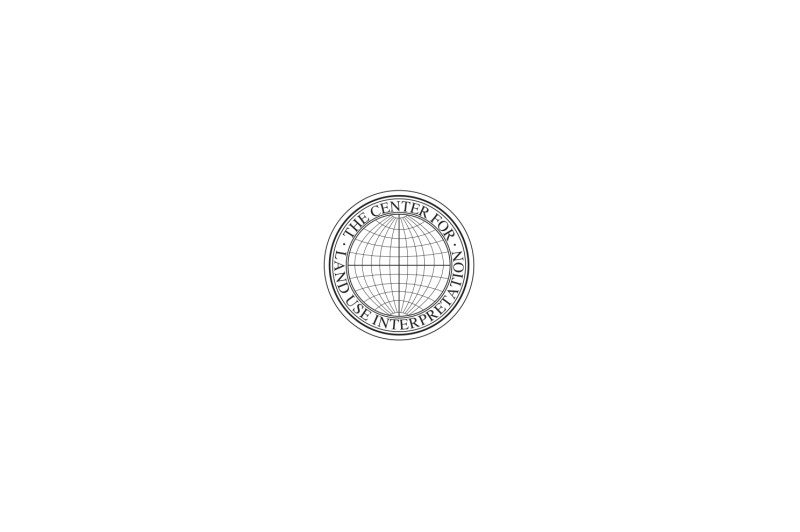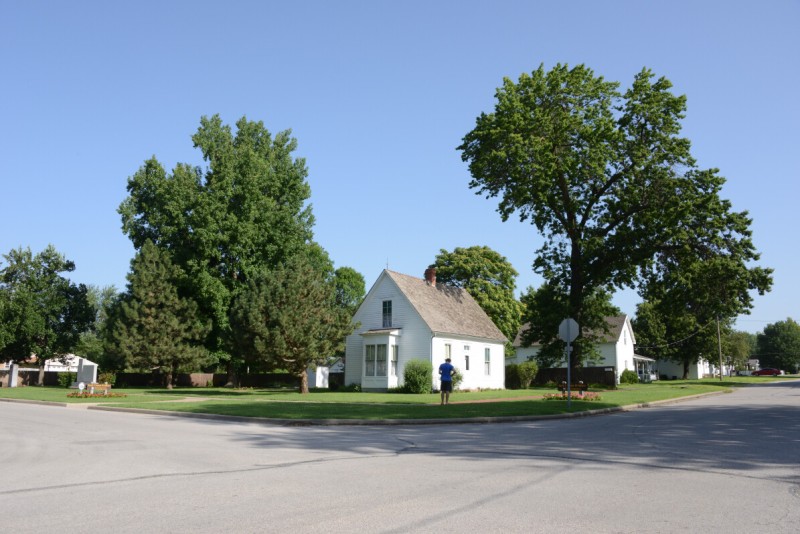
Harry S. Truman was born in 1884, in this house in Lamar, Missouri.
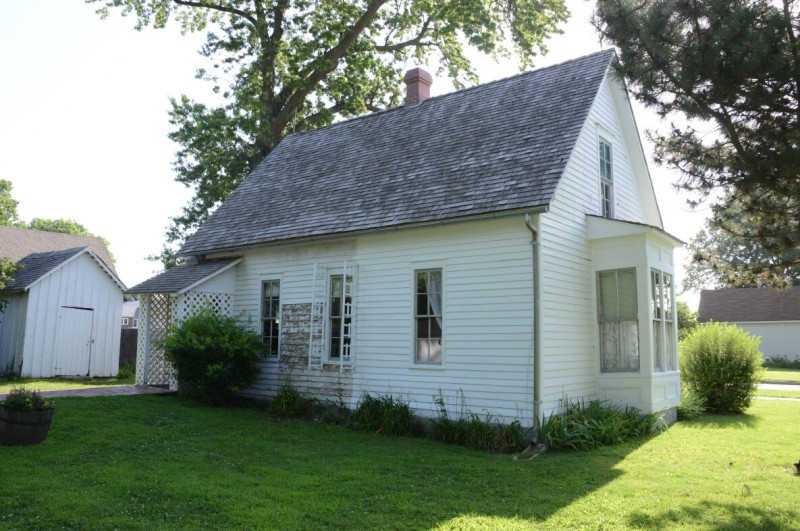
His father was a mule salesman, and bought the house from its builder when it was new, in 1882, for $685.
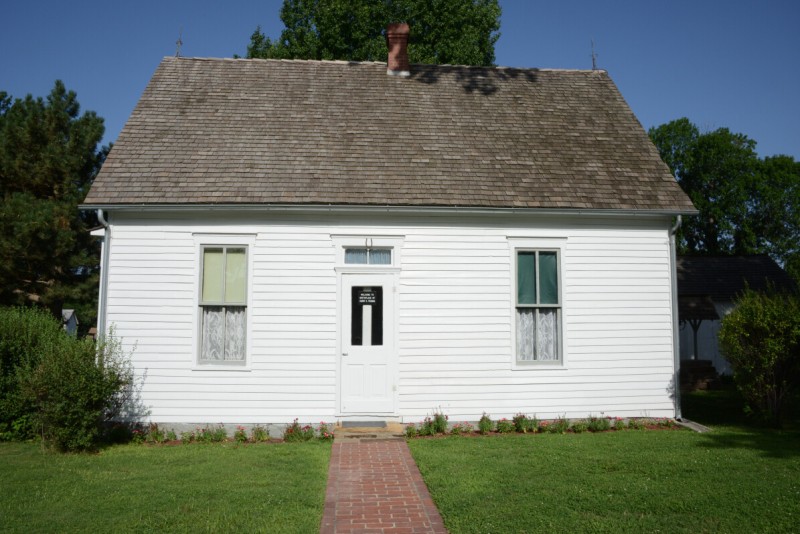
They moved out ten months later, to a farm in Harrisonville, and sold the house in Lamar.
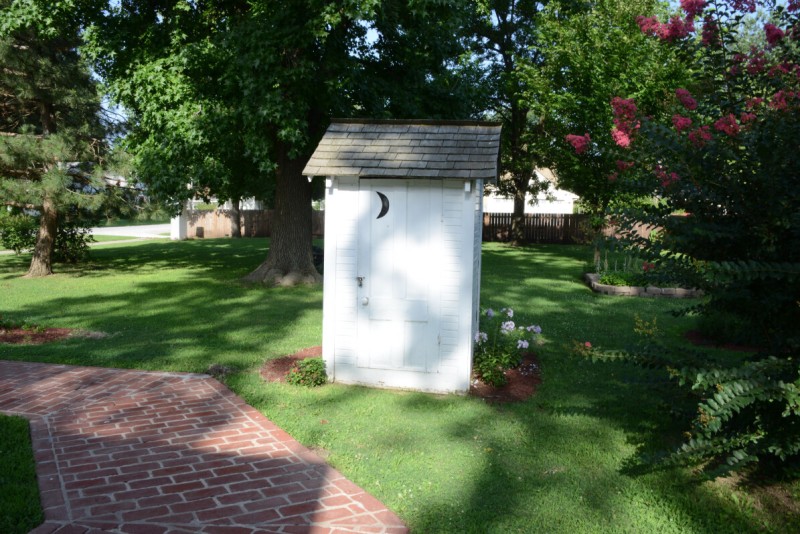
The house was later owned by a cousin of Wyatt Earp, who sold it to the United Auto Workers in 1956 for $6,000, so they could donate it to the state.
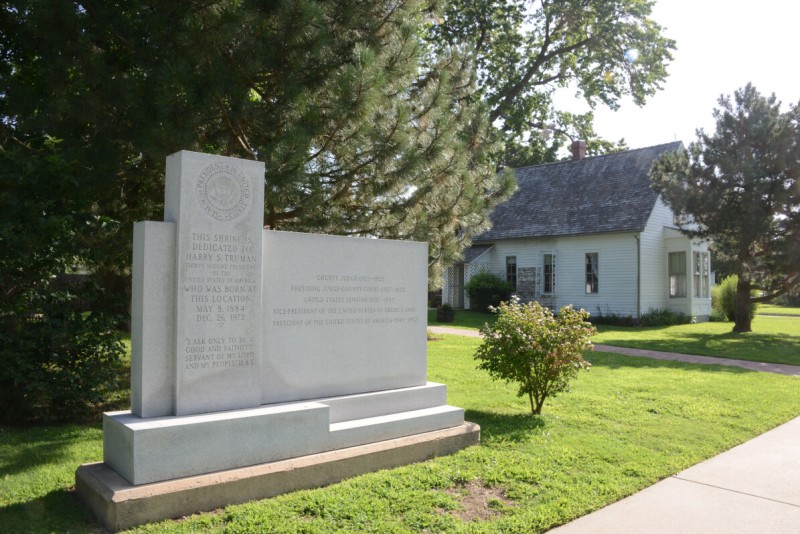
The UAW installed a stone memorial at the site to commemorate their benevolence.
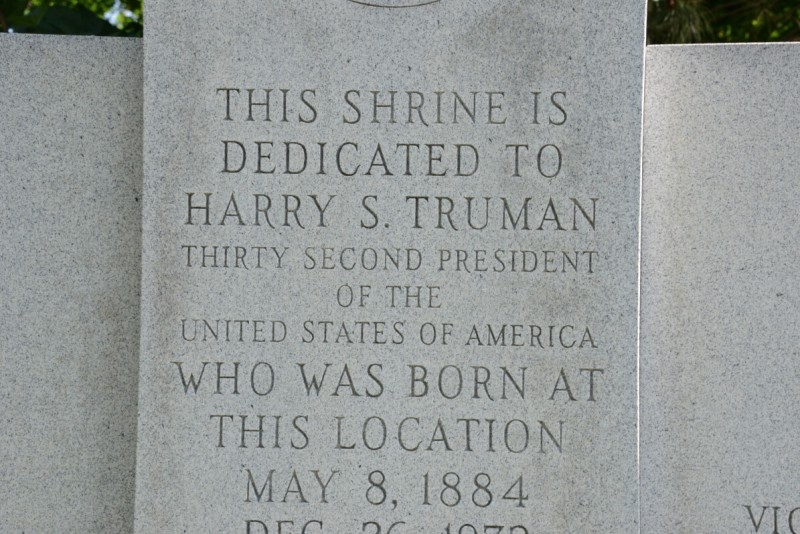
The stone monument says that Truman was the 32nd president, though he is largely understood to be the 33rd. They might have been confused by Grover Cleveland, who served two non-consecutive terms, and is officially known as both the 22nd and the 24th President. So they may not be wrong, just out of step with convention.
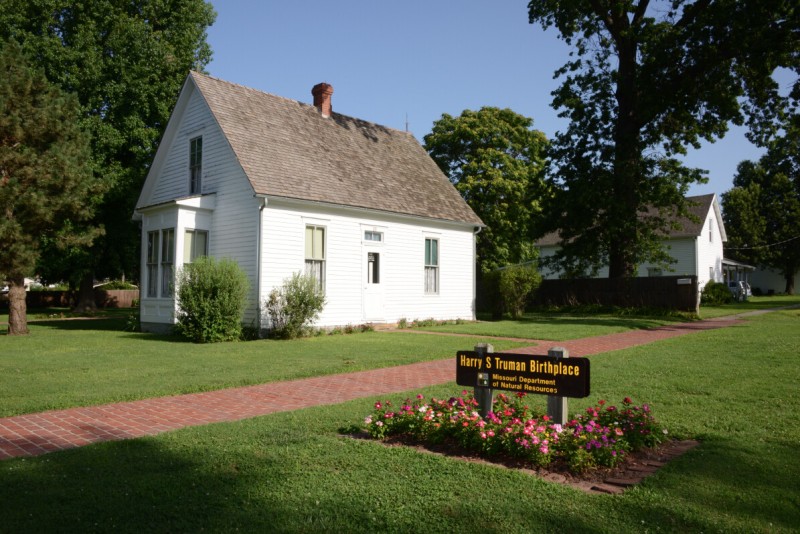
Truman was on hand when the site was dedicated as the Harry S. Truman Birthplace State Historic Park, on his 75th birthday in 1959. Since he was ten months old when he left, he had no memories to offer.
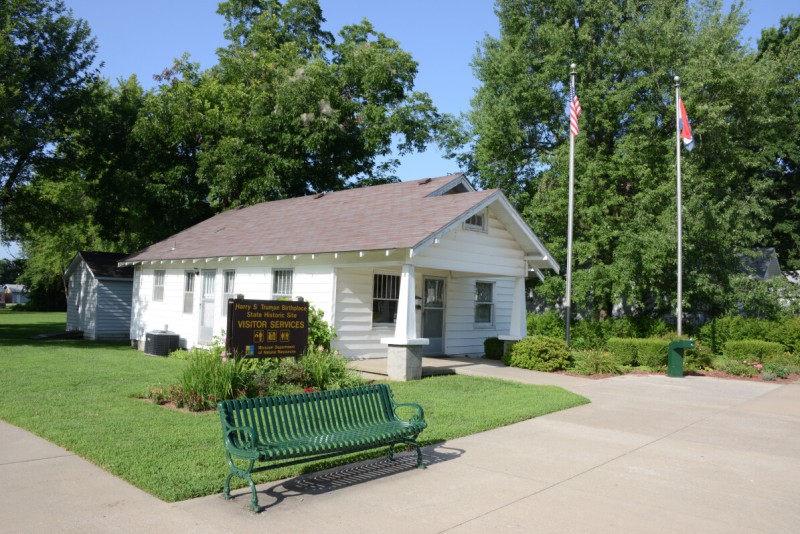
There is a small visitor center across the street, with regular, though limited, open hours.

As an infant, Truman moved with his family to a farm in Harrisonville, then to his grandparent’s farm in Grandview, then to Independence. In 1905, they moved back to the Grandview farm, and a year later, when he was 22 years old, he joined them to help operate the farm.
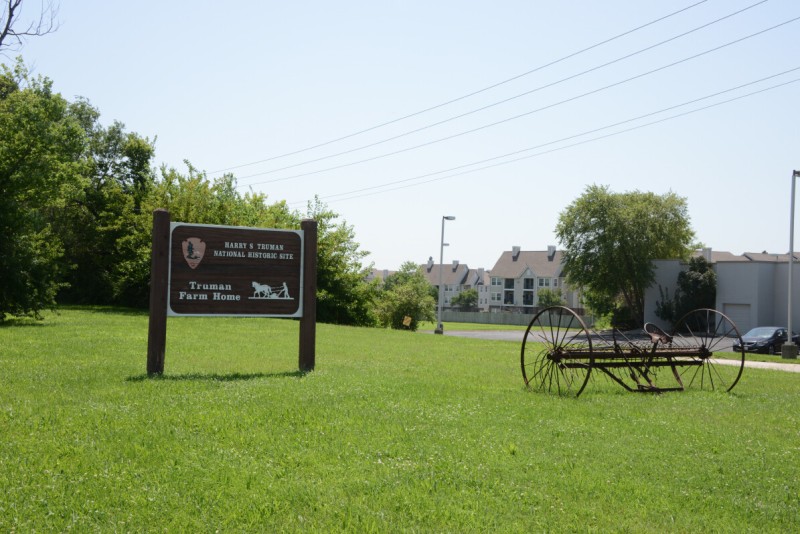
For the next ten years, Truman worked on the family farm in Grandview, taking over management of it when his father died in 1914.

During World War One he joined the military and went to France. When he came back to Missouri, a couple of years later, he did not return to the farm, and eventually it was sold.
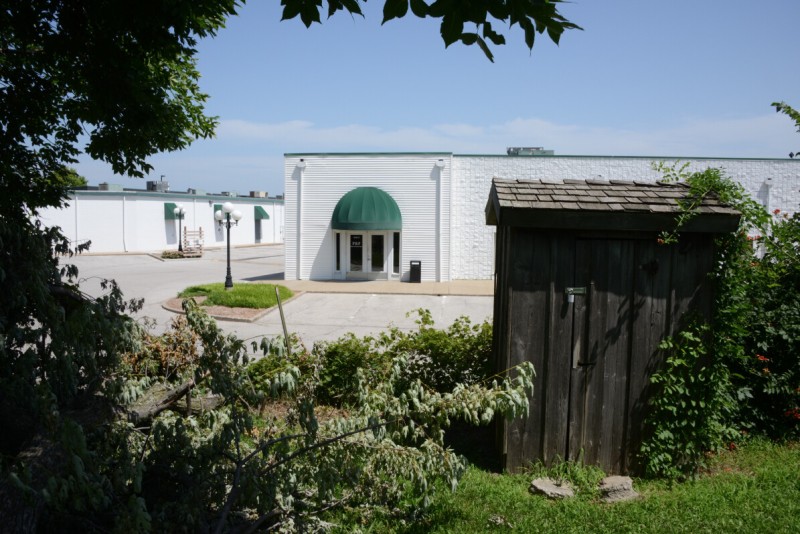
The family bought some of the land back in 1945, and sold most of it to developers, who built the Truman Corners Shopping Center next door.
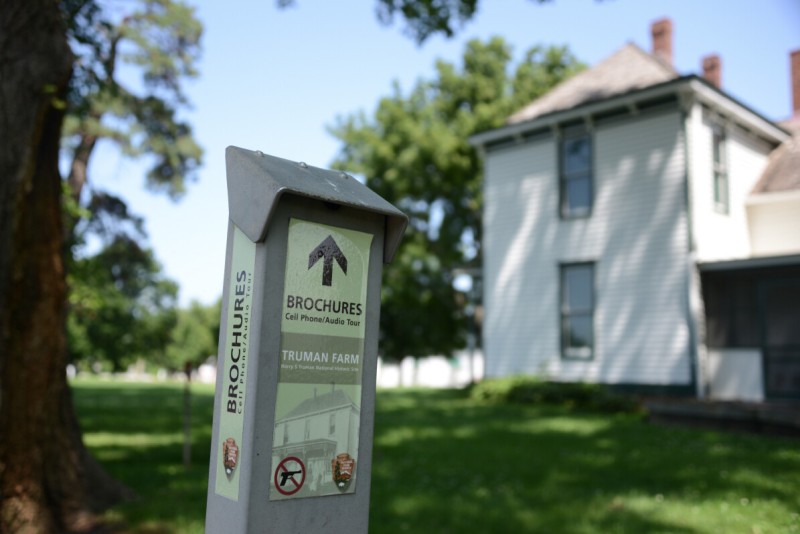
The remaining 11 acres, with house, was transferred from the family to a preservation organization in 1981. In 1994 it became part of the Harry S. Truman National Historic Site (which manages his principal residence, in Independence).
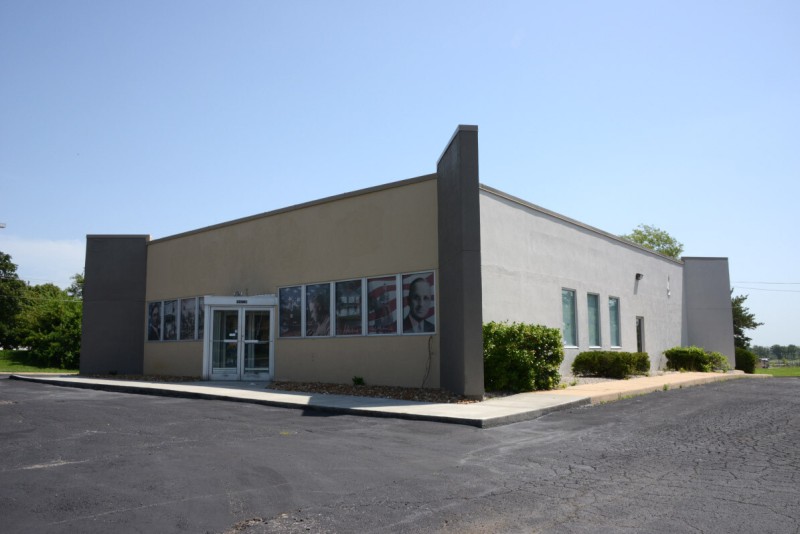
Though a National Park Service site, it is unmanned, and a visitor center next door is shut down. Tours stopped in 2013 due to budgeting problems.
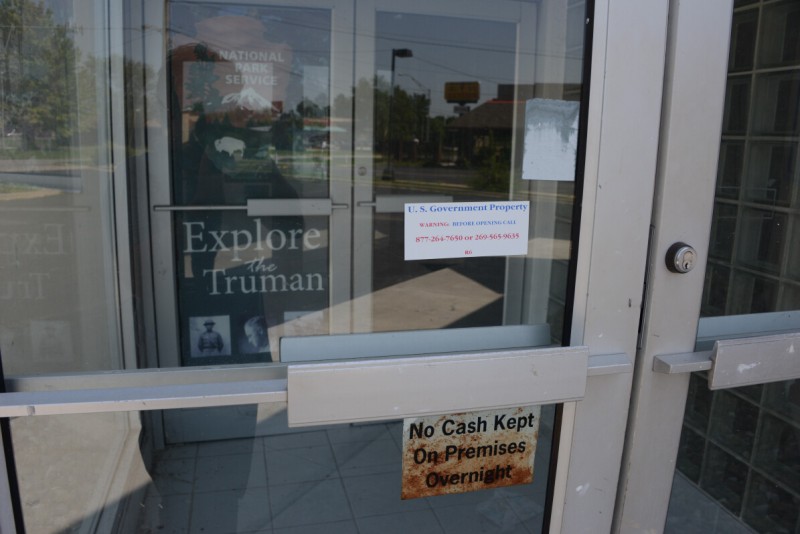

In 1919, after Truman returned from World War One, he married Bess, his longtime sweetheart, and they moved in with her mother at 219 Delaware Street, in Independence. This would be their home for the rest of their lives.
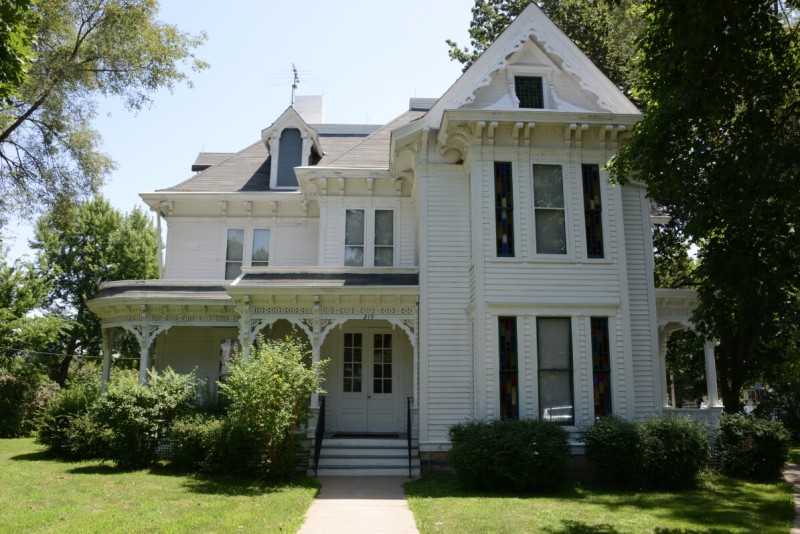
It’s a 14-room Victorian, built by Bess’ grandparents in 1885.

After failed businesses, including a men’s clothing store he owned in Kansas City, Truman got into local politics, became a US senator, and moved to Washington. Initially Bess stayed in the house with her aged mother and their young daughter, joining him in Washington later.
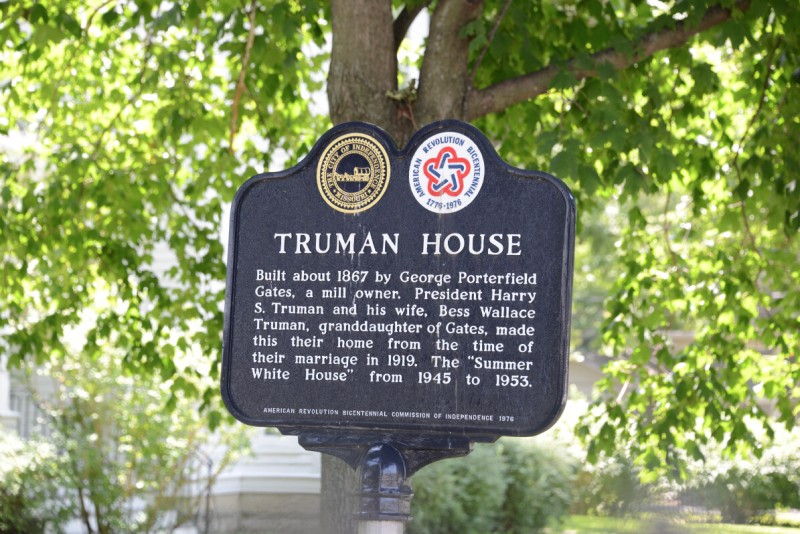
Though they returned often during his presidency, they moved here for good after his second term as president ended, in 1953. They were finally able to buy the house from the family then too, making this the first and last house Truman ever owned.
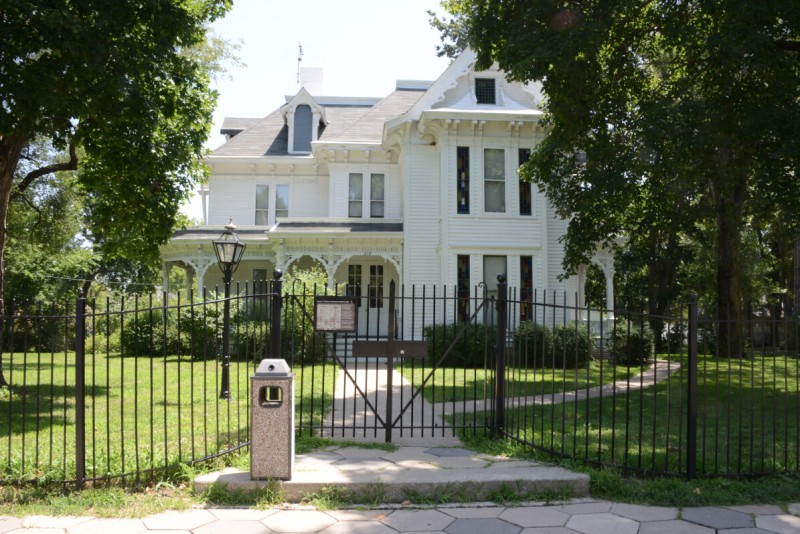
Bess continued to live in the house after her husband died in 1972. She passed away in 1982, bequeathing the house to the federal government, which offers guided tours.
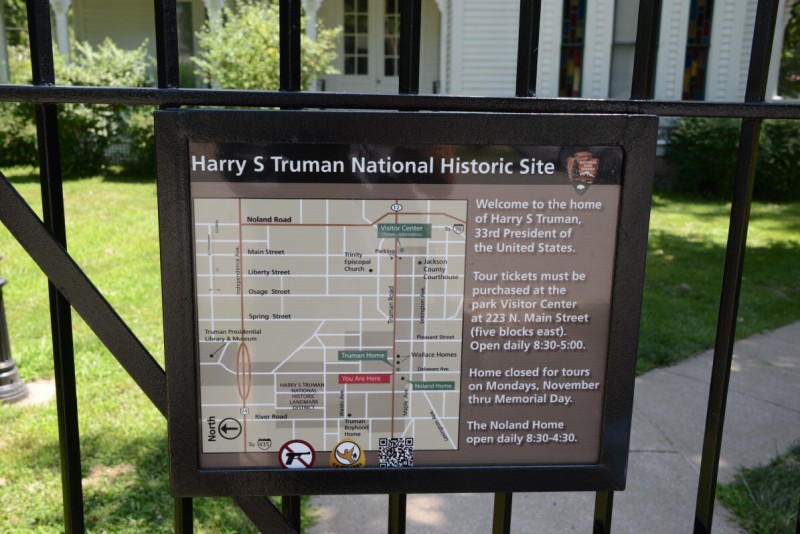
It is part of the Harry S Truman National Historic Site, which also includes some of his relatives’ homes nearby.

The historic site is based out of a visitor center in a converted fire station, a few blocks down the street.
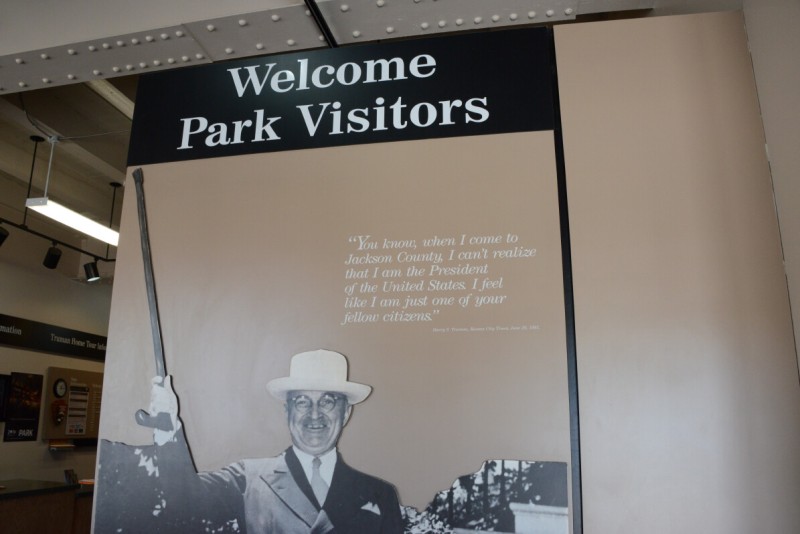
Visitors can buy tickets to tour the home, and watch an introductory film about Truman’s life.
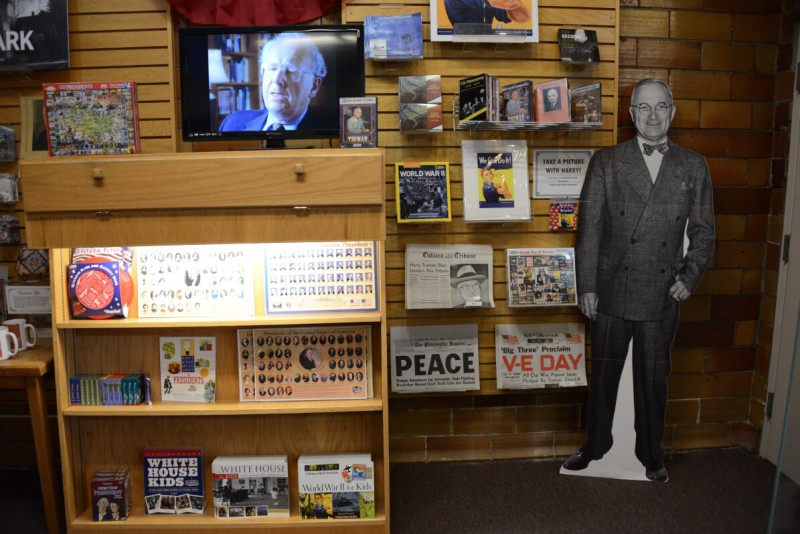
There is also a gift shop.
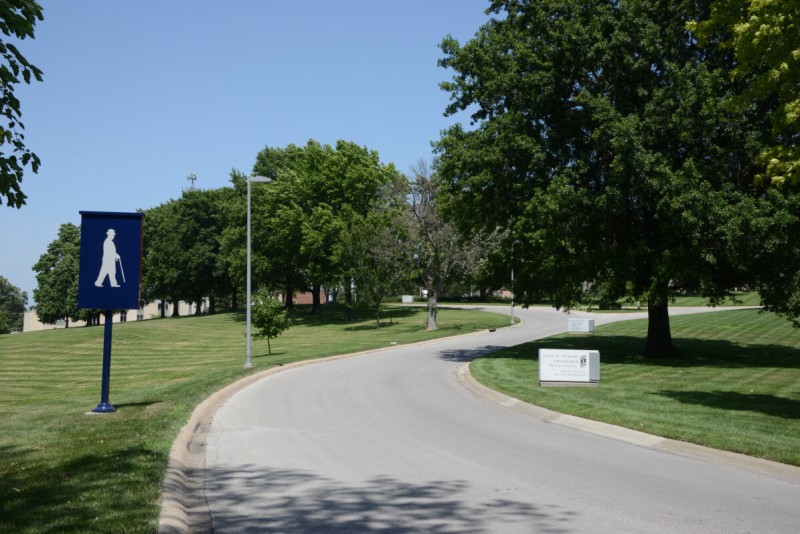
When Harry Truman came home after his presidency, he worked on establishing his presidential library and museum, located a few blocks north of downtown.
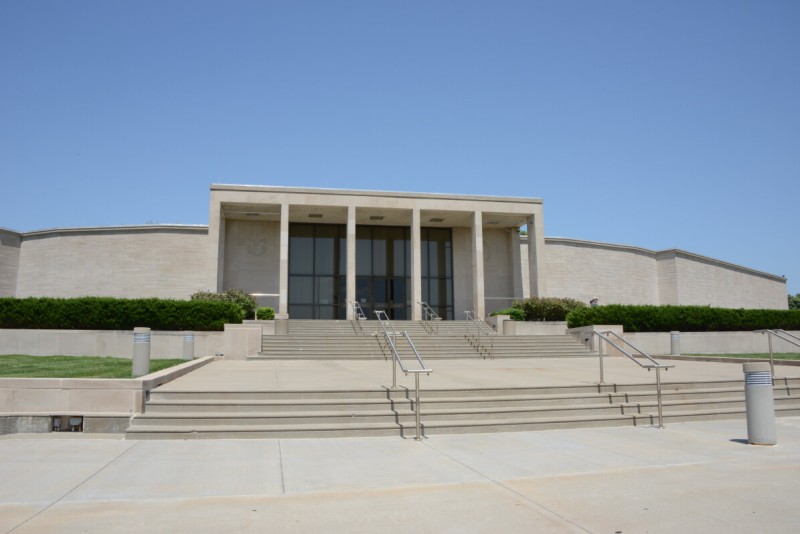
It opened in 1957, and he moved his office there, and continued working, writing, meeting, and even answering the phone there, for the next 15 years.
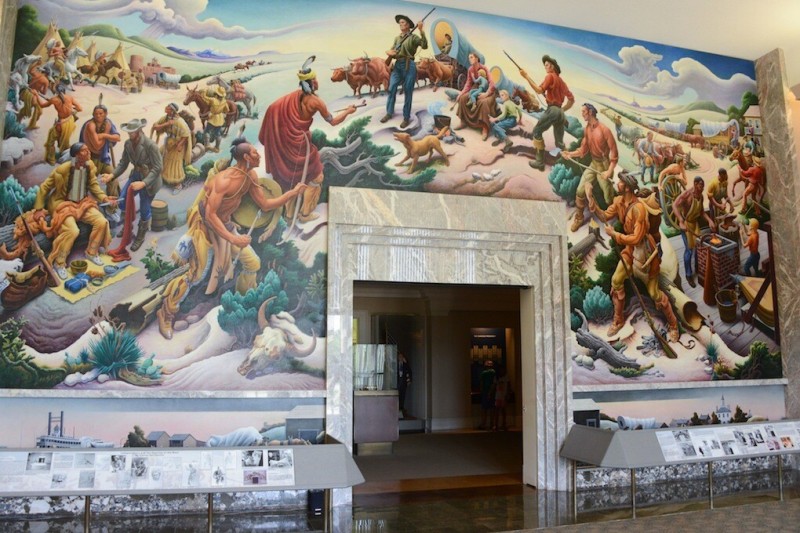
In the lobby is a large mural, "Independence and the Opening of the West" by Thomas Hart Benton, who painted it on site over a period of three years, completed in 1961.

Much of the building is occupied by displays about Harry Truman’s life and presidency, most of which have been updated since his time. Upstairs are ten meandering galleries covering his presidential years, filled with screens, text and artifacts.
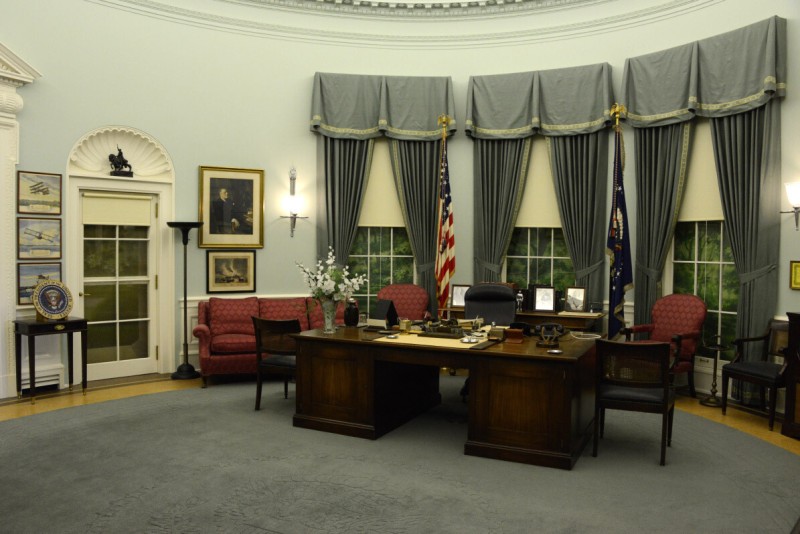
There is a recreation of his White House oval office, a feature for presidential library museums that has since been repeated by presidents Johnson, Nixon, Ford, Carter, Reagan, George H. W. Bush, Clinton, and George W. Bush.
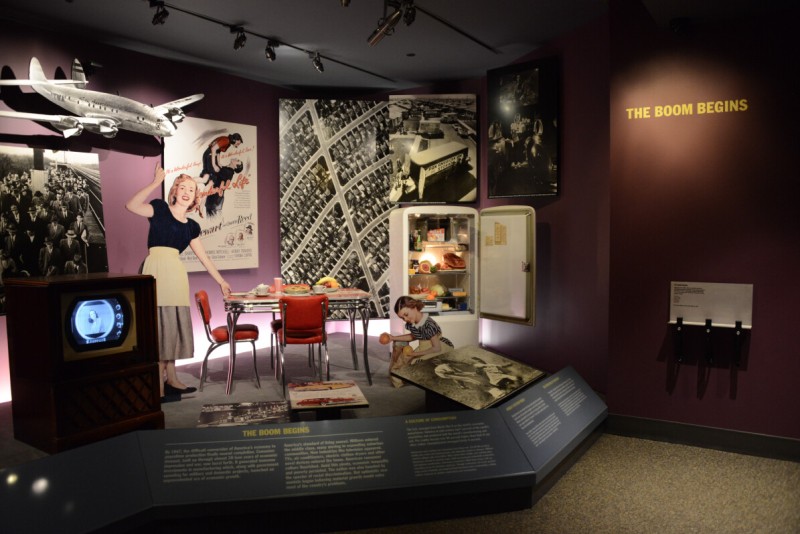
There are displays about the post-war boom in America.
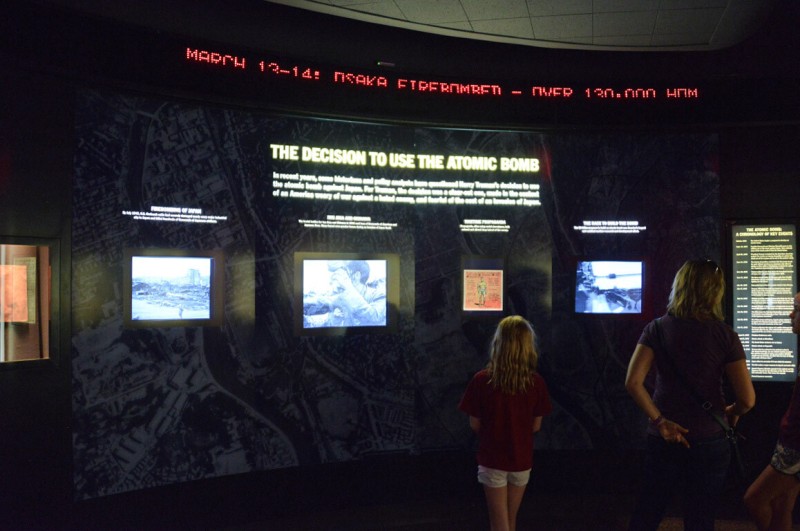
As well as the atomic blast that brought an end to the war.
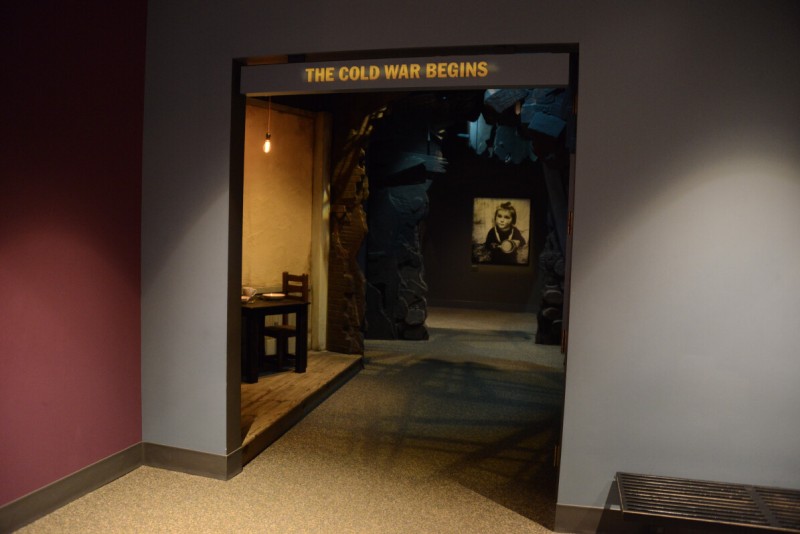
The beginnings of the Cold War.
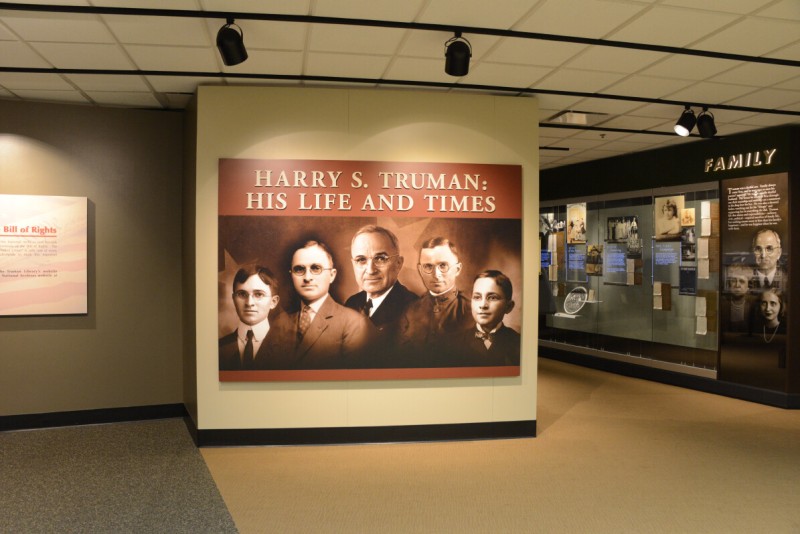
Downstairs the exhibits continue, covering his life and times.
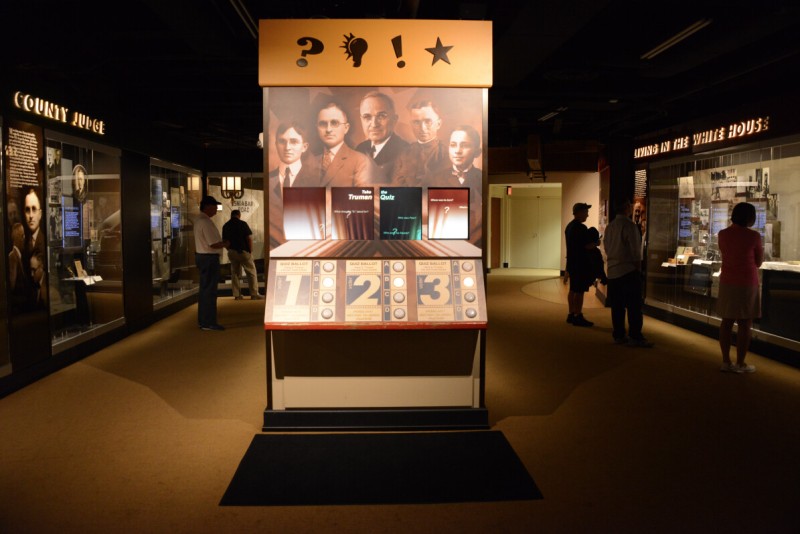
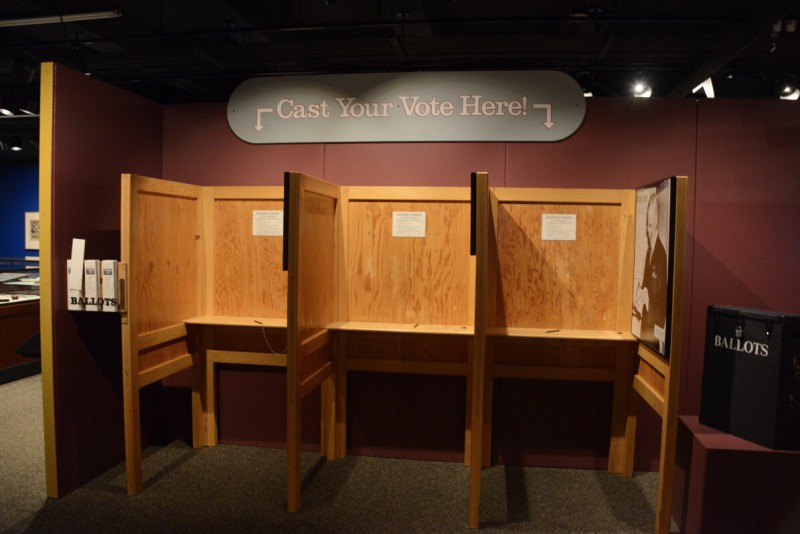
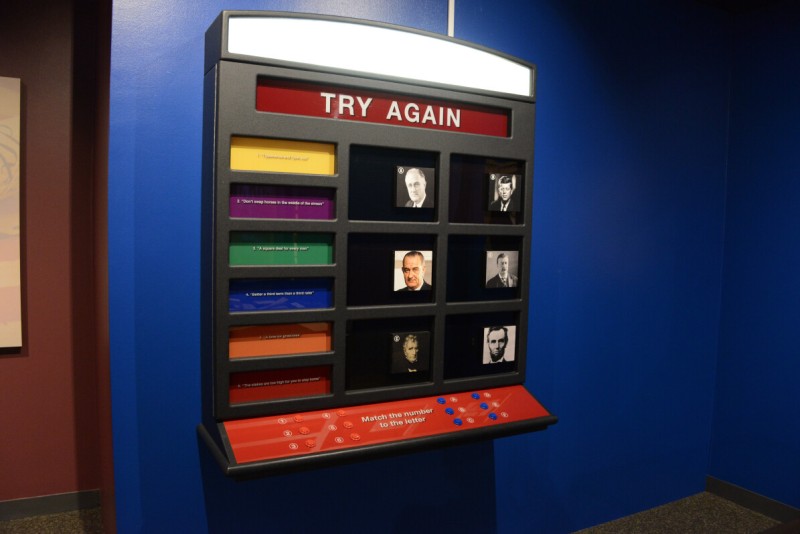
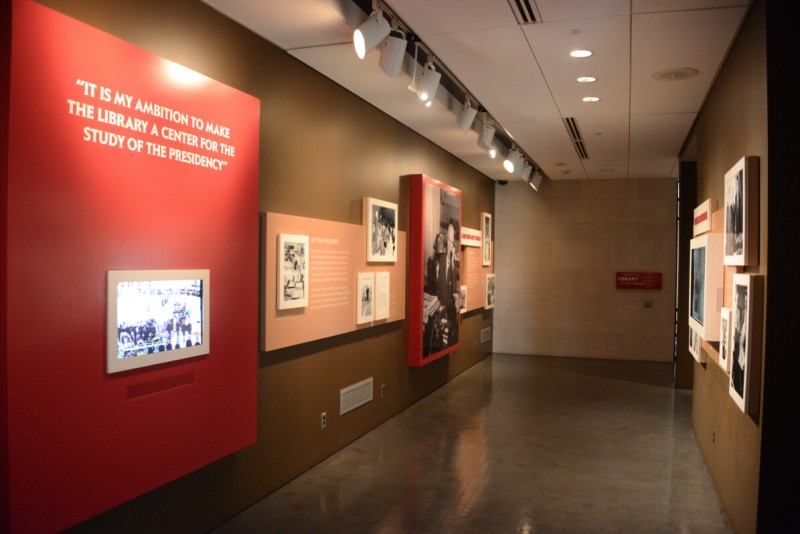
Throughout are quotes and thoughts.
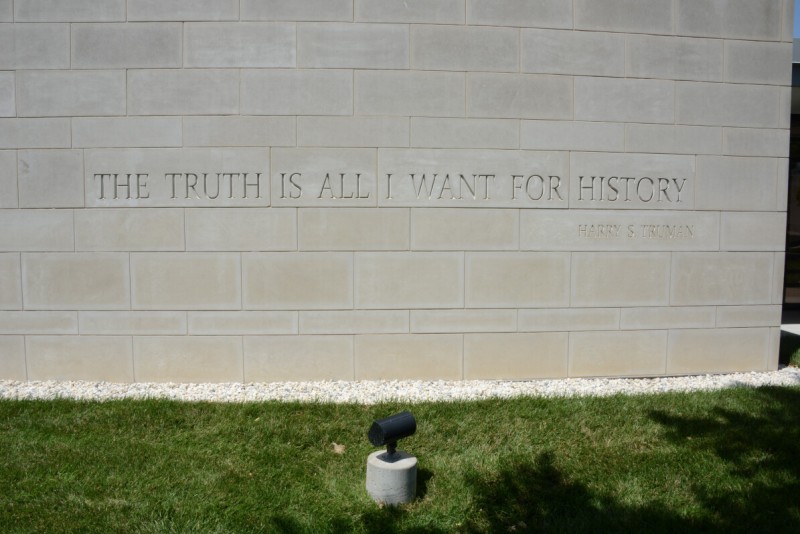

At the end, of course, a gift shop.

The facility was heavily redesigned in 2001, using more glass around the inner courtyard.

In 2007, his former office was opened up to public viewing with a $1.6 million renovation project. The office where Truman worked over the last 15 years of his life, in the very location inside his legacy museum and library, has been recreated as it appeared December 26, 1972, the day he died, at age 88.
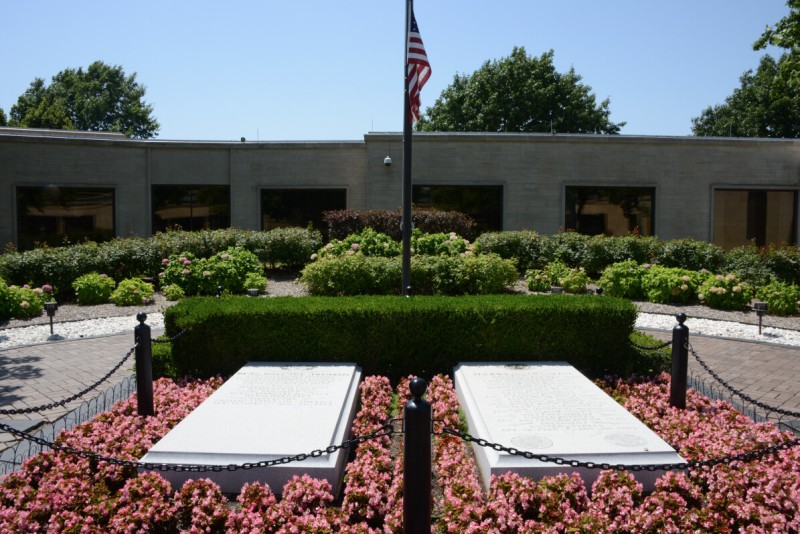
Outside the office door, inside the courtyard, is his tomb, where his wife Bess joined him ten years later.
